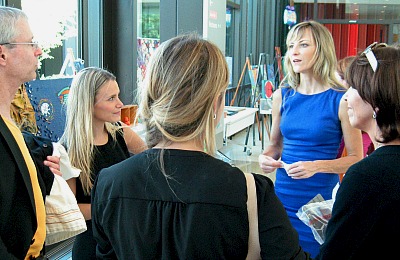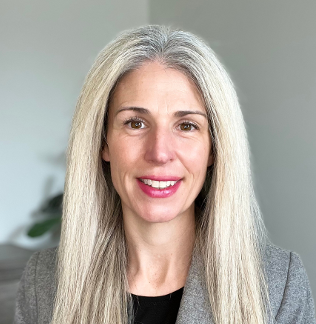Unmasking Pain: Why Connection Is Needed
I’ve lived with pain for most of my life. Not the kind that fades with simple remedies—but the kind that lingers, reshapes your days, and rewrites your relationships. I was just 13 when I was diagnosed with complex regional pain syndrome (CRPS), a neurological disease that turned a simple ankle sprain into a year-long battle with burning pain, hypersensitivity, and loss of mobility.
Thankfully, an epidural nerve block and months of aggressive physical therapy helped me regain function and find remission. I began to feel like a normal teenager again. But that fragile peace shattered during my senior year of high school. After a fluke high-five with a friend, the disease came back with a vengeance—my right hand clenched into a fist and stayed that way for nearly five years.
Pain has a way of separating you. From your routines. From your sense of self. And, most heartbreakingly, from others.
My parents went to bat for me time and again, advocating fiercely when I couldn’t. My brother was always there—steady, patient, ready to help. And my friends kept calling, kept showing up. But even surrounded by all that love, I still felt alone—an island no bridge could reach, where my hurt was unseen and my voice unheard.
The Power of Belief
Doctors suggested conversion disorder, ordering psychological testing instead of treatment. I wasn’t just battling CRPS—I was battling disbelief that not only delayed care but also fractured my self-worth. When specialists questioned my pain, I questioned myself, too. Was I exaggerating? Was it all in my head? That kind of gaslighting doesn’t just make you doubt your symptoms—it makes you doubt your value.
I wore strength like armor, but inside, I was unraveling. People praised my resilience, but no one saw the nights I cried myself to sleep, wondering if I’d ever feel normal again. While my peers were going to prom and grad night, I was in the hospital. I didn’t just miss experiences—I missed the sense of belonging that comes with them.
Hospitals and doctor’s offices became my second home. I lost the use of both hands, relied on my parents for basic care, and watched life pass me by. I knew only one other person with CRPS—a woman three decades older. She became my lifeline.
She didn’t just understand the medical terminology. She related to the exhaustion of constant pain and the loneliness that comes from feeling unseen. With her, I could cry, vent, joke, laugh, or say nothing at all. We shared tools and strategies, but more, we shared space. She validated my experience in a way no doctor ever had.
In a world that kept questioning my reality, she simply believed me. And that helped me believe in myself again.
Beyond the Chart
Eventually, I found a treatment that helped. I regained mobility, ran a half-marathon—to prove to myself pain didn’t define me—and became a mom to three incredible boys. But pain is still a part of my life. I’ve simply learned how to live alongside it and manage it better with a more-complete toolbox.
I also wrote a memoir, hoping to give voice to what so many of us struggle to say. That book connected me to the U.S. Pain Foundation. Over time, I went from volunteer to program director, and today I have the privilege of serving as CEO.
Pain Awareness Month is deeply personal to me. It’s not just a campaign—it’s visibility. It’s about validating the millions of Americans who live with pain every day, often in silence.
This September, U.S. Pain chose the theme, “Unmasking Pain: Because pain is more than a chart. It’s a life.” Pain isn’t just a diagnosis on a chart or a symptom to treat. It’s every canceled outing, every painstaking step required to navigate a day meant for connection or fun. It’s the invisible weight people carry while trying to show up for others.
U.S. Pain is releasing findings this month from its 2025 Pain Experience Survey. The nationwide survey, which gathered responses from nearly 2,100 individuals with chronic pain, reveals the staggering emotional toll of pain:
- 85% felt overwhelmed by the combined weight of pain and mental health symptoms
- 79% said their pain makes it difficult to spend time with family or friends
- 73% felt socially isolated or misunderstood
These numbers reflect what many of us already know: Pain isolates. That’s why peer support is so vital. Being with someone who simply gets it can validate what pain often erases—our humanity.
Finding Connection
Today, peer support is more accessible than ever through virtual communities. U.S. Pain offers more than 60 free online peer support groups each month. Being believed is the first step toward reclaiming your voice, your worth, and your power to advocate for better care.
That’s why Pain Awareness Month matters. It honors the full truth of life with pain—not just the physical toll, but the emotional, relational, and financial weight.
If you’re reading this and feeling isolated, I want you to know: Your pain is real. Your story matters. And there is a community here—ready to listen, believe you, and advocate for and with you.
Let’s unmask pain. Let’s amplify the voices behind the chart. Let’s build a world where connection restores hope and drives better outcomes—for everyone.
Learn more about Pain Awareness Month: uspainfoundation.org/painawarenessmonth

